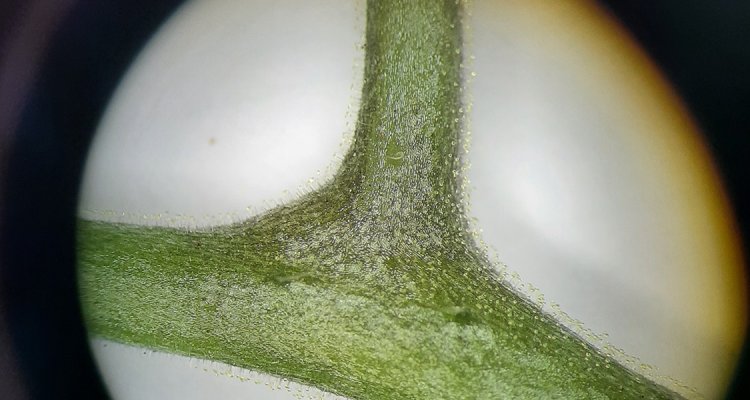
News
Tomato russet mites hide under sticky trichomes
The tomato russet mite (Aculops lycopersici) can cause major problems in tomato cultivation. This mite feeds on the surface cells of plant leaves and stems. If nothing is done to control it, the tomato plant and fruits turn a rusty color and become unsellable. The Business Unit Greenhouse Horticulture and Flower Bulbs of Wageningen University & Research is investigating the efficacy of two biological control agents (Pronematus ubiquitus and Transeius montdorensis) in combination with plant breeding to control this pest.
The tomato russet mite (Aculops lycopersici) causes tomato crop losses in many countries. Synthetic chemical pesticides against this pest are available, but they are harmful to the environment and have negative effects on natural enemies of pests. A promising alternative to chemical treatments is biological control with predatory mites. However, a challenge for biological control is the presence of trichomes on tomato leaves and stems. These tiny hairs produce sticky exudates to which many predatory mites become trapped and die. The tomato russet mite, due to its very small size, can remain under the trichomes.
WUR is investigating two options to control A. lycopersici: smaller predatory mites that can also remain under the trichomes and breeding tomato varieties with less sticky trichomes. With these new tomato varieties, larger predatory mites can also survive and control the tomato russet mite. WUR tests 2 predatory mites of different sizes (Transeius montdorensis and Pronematus ubiquitus) and 2 tomato varieties: one commercial variety with sticky trichomes and one wild mutant variety with less sticky trichomes. The results will be known in 2024.